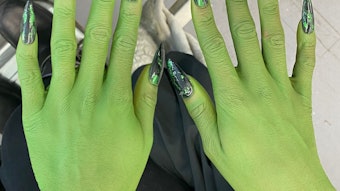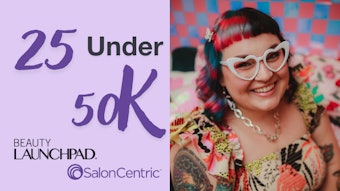
When the eye or surrounding eye area is exposed to bacteria, eye conditions like blepharitis, chalazia or styes can occur. Although all three common ailments are treatable, it’s important to educate your clients on the importance of proper care to avoid them. Here, we break down each condition so that you’ll be prepared if you encounter any of the conditions.
Blepharitis
Blepharitis is the inflammation of the eyelid caused by an accumulation of the natural bacteria that usually occurs on both eyes. Symptoms include itching on the lid, burning or gritty sensation in eyes, dryness, crusted or matted eyelashes, blurry vision, sensitivity to light and watery eyes.
RELATED: 5 Tips to Protect Your Vision and Prolong Your Career
For mild cases of blepharitis, warm compresses and gentle massage to unblock oil glands can do the trick. For more persistent cases, clients may need to visit a doctor who can prescribe drops or ointments, topical steroids or antibiotics. Although blepharitis is not contagious, “anyone showing signs of it should be referred to an eye-care provider,” says Omaha, Nebraska- based optometrist Teri Geist, OD. Lash artists should recommend gentle lash cleansing daily to all of their clients to keep the eyelids and lashes free of bacteria buildup and request written permission from a doctor before working with new clients. In severe cases of blepharitis, lash extensions should be removed to allow time for the skin to heal and to avoid further lash loss.
Chalazion
A chalazion occurs when an oil gland on the eyelid becomes blocked, resulting in a swollen bump at the lash line. Most chalazia occur on one eye at a time and are usually not painful. Treatments include warm compresses, antibiotics, steroid shots or surgery to drain the area. “Simple lid scrubs and proper cleaning can clear the irritation up as well,” offers Leah Lynch, owner of Beautique Salon & Spa and master lash trainer in Newburyport, Massachusetts. “Some clients think if they don’t touch the lashes or clean them, the extensions will last longer. However, clients should wash their lashes at least every other day. This helps prevent natural oils from being blocked by extensions and adhesive,” she says.
While the inflammation is not contagious, it will likely affect your ability to service a client with the condition. “Always ask your client for her doctor’s permission before lash services,” advises Lynch. If you’re not sure about removing lashes on a client with a chalazion, consult with a physician. “The solvents used for removal could exacerbate the condition and cause pain,” she explains.
RELATED: How Eyelash Techs Can Prevent Eyestrain
Style
A stye is similar to the other lash conditions, however it’s caused by a bacterial infection of the sebaceous glands, often the result of a clogged hair follicle. Its defining characteristics include redness and a pus-filled center, like a pimple. However, these are not pimples, and clients should never try to pop or squeeze any bumps on the eyelids. Applying warm compresses with a clean washcloth over the area for 10 to 15 minutes, three to five times each day may be suggested.
Lash artists should not work on a client with a stye until the condition has cleared. If you encounter a client with a stye, “discourage her from popping or trying to lance the stye at home, as serious infection can occur as a result if the infection spreads to the surrounding tissue,” advises Lynch. Instead, inform your client that you will gladly continue the service once the stye has healed. Let your client know that if it doesn’t clear up on its own in a week or two, she should see a doctor.
As a lash professional, it’s of the utmost importance to ensure that your hands, tools and station are always properly cleaned and disinfected so that you never spread bacteria to clients. It’s also a good idea to have all new clients sign a release to protect yourself from any potential liabilities, particularly where the client’s health is concerned.
–by Megan James
This story first appeared in the May/June issue of Eyelash magazine. To receive the magazine, click here to subscribe.
[Images: Getty Images]











